Filter by
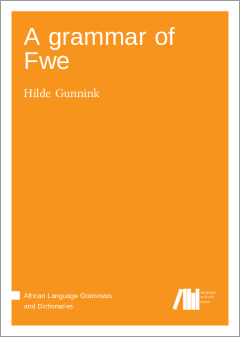
A grammar of Fwe
This book provides a first-ever comprehensive overview of the grammatical structure of Fwe. Fwe is a Bantu language spoken on the border between Zambia and Namibia, by some 20,000 people. Very little previous documentation exists on the language, and the current description of Fwe is based exclusively on newly collected field data. It includes an analysis of the grammatical structure of Fwe, fo…
- Edition
- -
- ISBN/ISSN
- 978-3-96110-388-1
- Collation
- 531 hlm
- Series Title
- -
- Call Number
- -
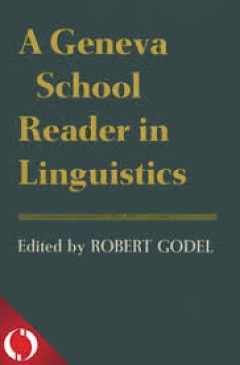
A Geneva School Reader in Linguistics
Over a half century after the death of the great Genevese linguist, Ferdinand de Saussure, Mr. Godel provides an external frame of reference for what has been called the "Saussurian School" of Geneva. He presents a succinct biography and bibliography of the leading figures of the School in chronological order according to their date of birth. Except for those linguists no longer alive (de Sauss…
- Edition
- -
- ISBN/ISSN
- 9780253049025
- Collation
- 361 hlm
- Series Title
- -
- Call Number
- -

A dictionary and grammatical sketch of Ruruuli-Lunyala (Volume 5)
This book is a dictionary and grammar sketch of Ruruuli-Lunyala, a Great Lakes Bantu language spoken by over 200,000 people in central Uganda. The dictionary part includes about 10,000 entries. Each lexical entry provides translations into English, example sentences, and basic grammatical information. The dictionary part is supplemented with an outline of the Ruruuli-Lunyala grammar, which trea…
- Edition
- -
- ISBN/ISSN
- 9783961103294
- Collation
- 769 hlm
- Series Title
- -
- Call Number
- -
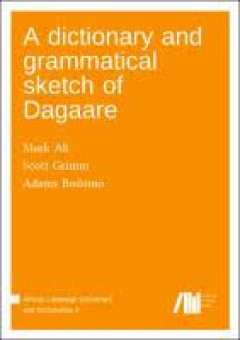
A dictionary and grammatical sketch of Dagaare
This book presents an extensive dictionary of the Dagaare language (Niger-Congo; Gur (Mabia)), focussing on the dialect of Central Dagaare, spoken in the Upper West region of Ghana. The dictionary provides comprehensive definitions, example sentences and the English translations, phonetic forms, inflected forms, etymological notes as well as information dialectal variation. This work is intende…
- Edition
- -
- ISBN/ISSN
- 978-3-96110-323-2
- Collation
- -
- Series Title
- -
- Call Number
- -
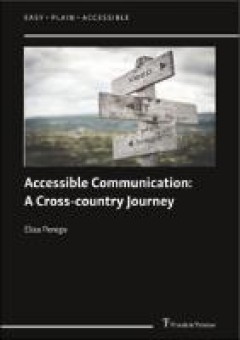
Accessible Communication
Easy-to-Understand (E2U) text practices enable and facilitate accessible communication. E2U refers both to Plain and to Easy Language. These two powerful methods of language and content comprehension enhancement are illustrated through several examples in English, starting from the seminal role of the Anglophone world in promoting plain and lucid style. Originally implemented in written texts, …
- Edition
- -
- ISBN/ISSN
- 9783732993369
- Collation
- oer.unej.ac.id
- Series Title
- -
- Call Number
- Educational strategies and policy
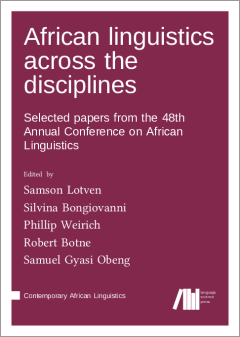
African linguistics across the disciplines
Since the hiring of its first Africanist linguist Carleton Hodge in 1964, Indiana University’s Department of Linguistics has had a strong and continuing presence in the study of African languages and linguistics through the work of its faculty and of its graduates on the faculties of many other universities. Research on African linguistics at IU has covered some of the major language groups s…
- Edition
- -
- ISBN/ISSN
- 9783961102129
- Collation
- -
- Series Title
- Contemporary African Linguistics
- Call Number
- -

African languages from a Role and Reference Grammar perspective
- Edition
- -
- ISBN/ISSN
- -
- Collation
- -
- Series Title
- -
- Call Number
- -
- Edition
- -
- ISBN/ISSN
- -
- Collation
- -
- Series Title
- -
- Call Number
- -

Advances in the study of Siouan languages and linguistics
" The Siouan family comprises some twenty languages, historically spoken across a broad swath of the central North American plains and woodlands, as well as in parts of the southeastern United States. In spite of its geographical extent and diversity, and the size and importance of several Siouan-speaking tribes, this family has received relatively little attention in the linguistic literature …
- Edition
- -
- ISBN/ISSN
- 9783946234388
- Collation
- oer.unej.ac.id
- Series Title
- Studies in Diversity Linguistics,
- Call Number
- -

A Baudouin de Courtenay Anthology: The Beginnings of Structural Linguistics
One of the earliest structural linguists, Baudouin de Courtenay was a pioneer in systematic phonology and a formative influence on Saussure, Jacobsen, and the Prague school of linguistics. This translation of de Courtenay's major writings gives Western scholars direct contact with his work for the first time. (Indiana University Studies in the History and Theory of Linguistics)
- Edition
- -
- ISBN/ISSN
- 9780253049261
- Collation
- -
- Series Title
- -
- Call Number
- -

A Bibliography of South African Languages, 2008-2017: With an Introduction by…
This concise bibliography on South-African Languages and Linguistics was compiled on the occasion of the 20th International Congress of Linguists in Cape Town, South Africa, in July 2018. The selection of titles is drawn from the Linguistic Bibliography and gives an overview of scholarship on South African language studies over the past 10 years.
- Edition
- -
- ISBN/ISSN
- -
- Collation
- -
- Series Title
- -
- Call Number
- -
 Computer Science, Information & General Works
Computer Science, Information & General Works  Philosophy & Psychology
Philosophy & Psychology  Religion
Religion  Social Sciences
Social Sciences  Language
Language  Pure Science
Pure Science  Applied Sciences
Applied Sciences  Art & Recreation
Art & Recreation  Literature
Literature  History & Geography
History & Geography